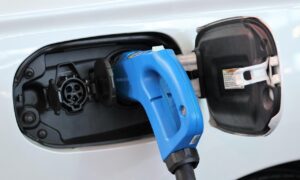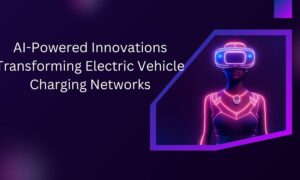As the world embraces sustainable solutions to combat climate change, the rise of electric vehicles (EVs) has become a pivotal component in the transition to a greener future. An integral part of this revolution is the installation of Electric Vehicle chargers, a critical infrastructure that supports and encourages the adoption of EVs. In this article, we’ll delve into the significance, challenges, and future outlook of EV charger installations.
The Green Revolution Unplugged: The Significance of EV Charger Installations
The growing shift towards electric vehicles is a testament to the collective commitment to reduce carbon emissions and reliance on fossil fuels. EVs offer a cleaner and more sustainable mode of transportation, but their widespread adoption is contingent on the availability of reliable charging infrastructure. EV charger installations play a pivotal role in bridging the gap between eco-friendly vehicles and a sustainable future.
Overcoming Range Anxiety: Charging Infrastructure Challenges
One of the primary challenges hindering the mass adoption of electric vehicles is the phenomenon known as “range anxiety” – the fear of running out of battery power before reaching a charging station. To alleviate this concern, widespread and strategically located EV charger installations are imperative. Addressing the challenges of charging infrastructure, including accessibility, convenience, and charging speed, is crucial for fostering EV adoption and creating a seamless experience for drivers.
Charging the Future: The Evolution of EV Charger Technology
The landscape of EV charger technology is rapidly evolving to meet the growing demands of a burgeoning electric vehicle market. From conventional Level 1 chargers at homes to high-speed Level 3 DC fast chargers in public spaces, the diversity of charging solutions is expanding. Innovative technologies, such as wireless charging and smart charging stations, are emerging to enhance user experience and efficiency. These advancements not only reduce charging times but also contribute to the overall appeal of electric vehicles.
The Role of Governments and Businesses: Incentivizing EV Charger Installations
To accelerate the adoption of electric vehicles, governments worldwide are implementing policies and incentives to encourage the installation of EV chargers. Financial incentives, tax credits, and streamlined permitting processes are being offered to businesses and individuals willing to invest in charging infrastructure. Companies are also recognizing the strategic importance of providing charging stations at workplaces, shopping centers, and parking lots to attract environmentally conscious customers and employees.
The Road Ahead: Future Trends in EV Charger Installations
The future of EV charger installations holds exciting prospects, with several trends shaping the landscape. The integration of renewable energy sources, such as solar power, into charging infrastructure is gaining momentum, further reducing the environmental impact of EVs. Additionally, the development of universal charging standards and collaborative efforts among automakers, utility companies, and technology providers are fostering a cohesive and interoperable charging network.
Conclusion: Charging Towards a Sustainable Tomorrow
As electric vehicles become an increasingly integral part of the global transportation ecosystem, the installation of EV chargers emerges as a linchpin for a sustainable future. Overcoming challenges, embracing technological advancements, incentivizing investments, and anticipating future trends will collectively propel the growth of charging infrastructure. The journey towards a cleaner and greener tomorrow is not just powered by electric vehicles but by the robust network of charging stations that support and sustain this revolutionary transition. Electric vehicle charger installations are not merely a practical necessity; they are the conduits through which we charge towards a sustainable and environmentally conscious future.


































